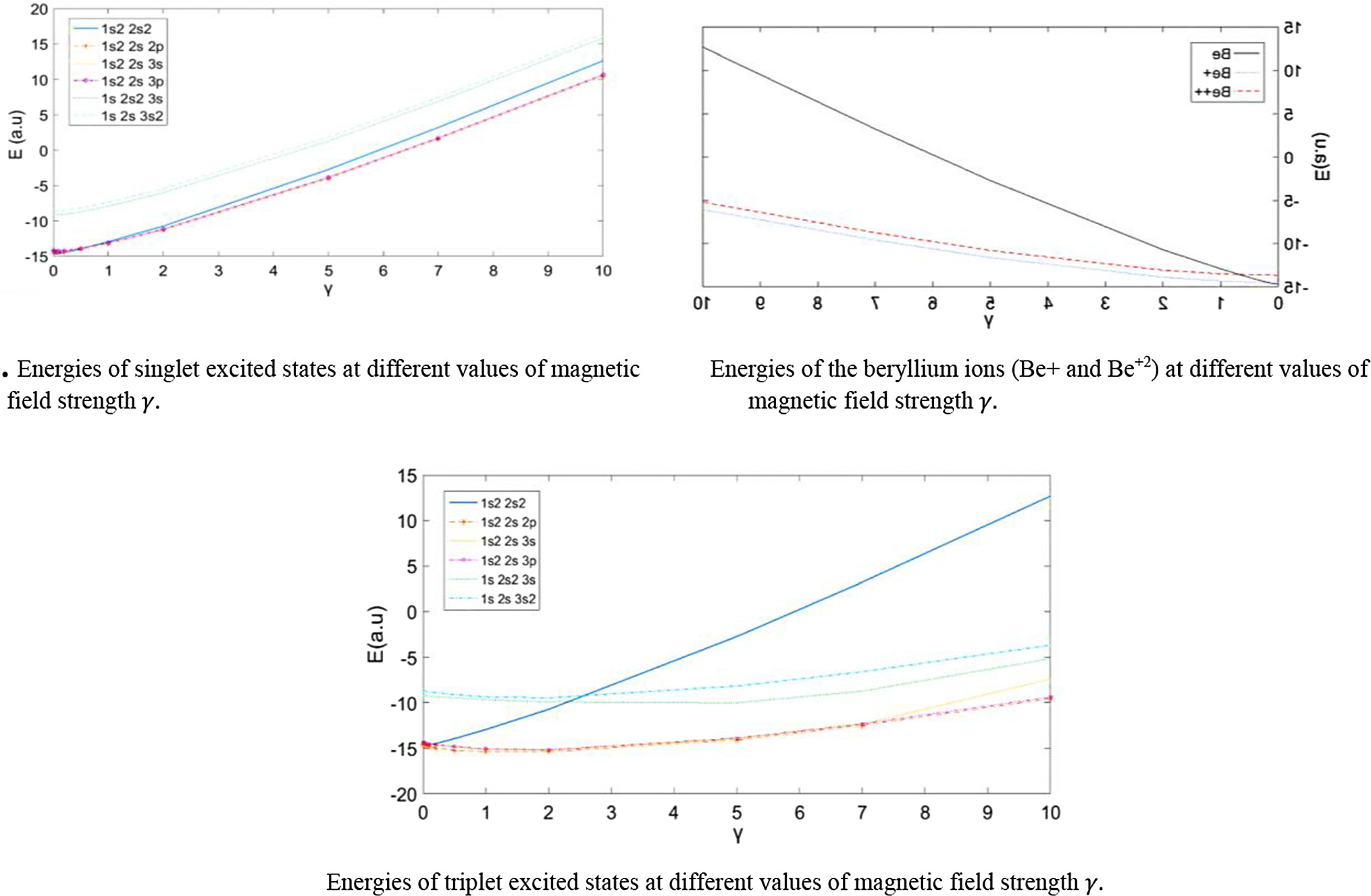https://doi.org/10.1140/epjd/s10053-023-00736-z
Regular Article – Atomic Physics
The beryllium atom, ions, and iso-electronic ions in magnetic field using the variational Monte Carlo method
1
Department of Mathematics and Computer Science, Faculty of Science, Alexandria University, Alexandria, Egypt
2
Department of Physics, Faculty of Science, Alexandria University, Alexandria, Egypt
Received:
3
May
2023
Accepted:
19
July
2023
Published online:
18
August
2023
The variational Monte Carlo method is applied to investigate several properties of the beryllium atom, ions, and its iso-electronic ions. For the ground and the excited states of the beryllium atom and ions, the energy eigenvalues were evaluated freely and under the influence of magnetic field. Furthermore, the iso-electronic ions (B+ and C2+) are also investigated under the influence of the external magnetic field. Suitable trial wave functions including the spin and the correlated parts are used in these investigation. Some new excited states were included in the present work, such as the low-lying states (1s22s3s and 1s22s3p) and the core states (1s2s23s and 1s2s3s2). For the spin functions of these states, we used two different functions for the singlet and the triplet excited states. Moreover, the energies of the beryllium ions (Be+ and Be2+) were evaluated freely and in the presence of magnetic field. The obtained results are in good agreement with the corresponding results of other works.
© The Author(s) 2023
 Open Access This article is licensed under a Creative Commons Attribution 4.0 International License, which permits use, sharing, adaptation, distribution and reproduction in any medium or format, as long as you give appropriate credit to the original author(s) and the source, provide a link to the Creative Commons licence, and indicate if changes were made. The images or other third party material in this article are included in the article's Creative Commons licence, unless indicated otherwise in a credit line to the material. If material is not included in the article's Creative Commons licence and your intended use is not permitted by statutory regulation or exceeds the permitted use, you will need to obtain permission directly from the copyright holder. To view a copy of this licence, visit http://creativecommons.org/licenses/by/4.0/.
Open Access This article is licensed under a Creative Commons Attribution 4.0 International License, which permits use, sharing, adaptation, distribution and reproduction in any medium or format, as long as you give appropriate credit to the original author(s) and the source, provide a link to the Creative Commons licence, and indicate if changes were made. The images or other third party material in this article are included in the article's Creative Commons licence, unless indicated otherwise in a credit line to the material. If material is not included in the article's Creative Commons licence and your intended use is not permitted by statutory regulation or exceeds the permitted use, you will need to obtain permission directly from the copyright holder. To view a copy of this licence, visit http://creativecommons.org/licenses/by/4.0/.





